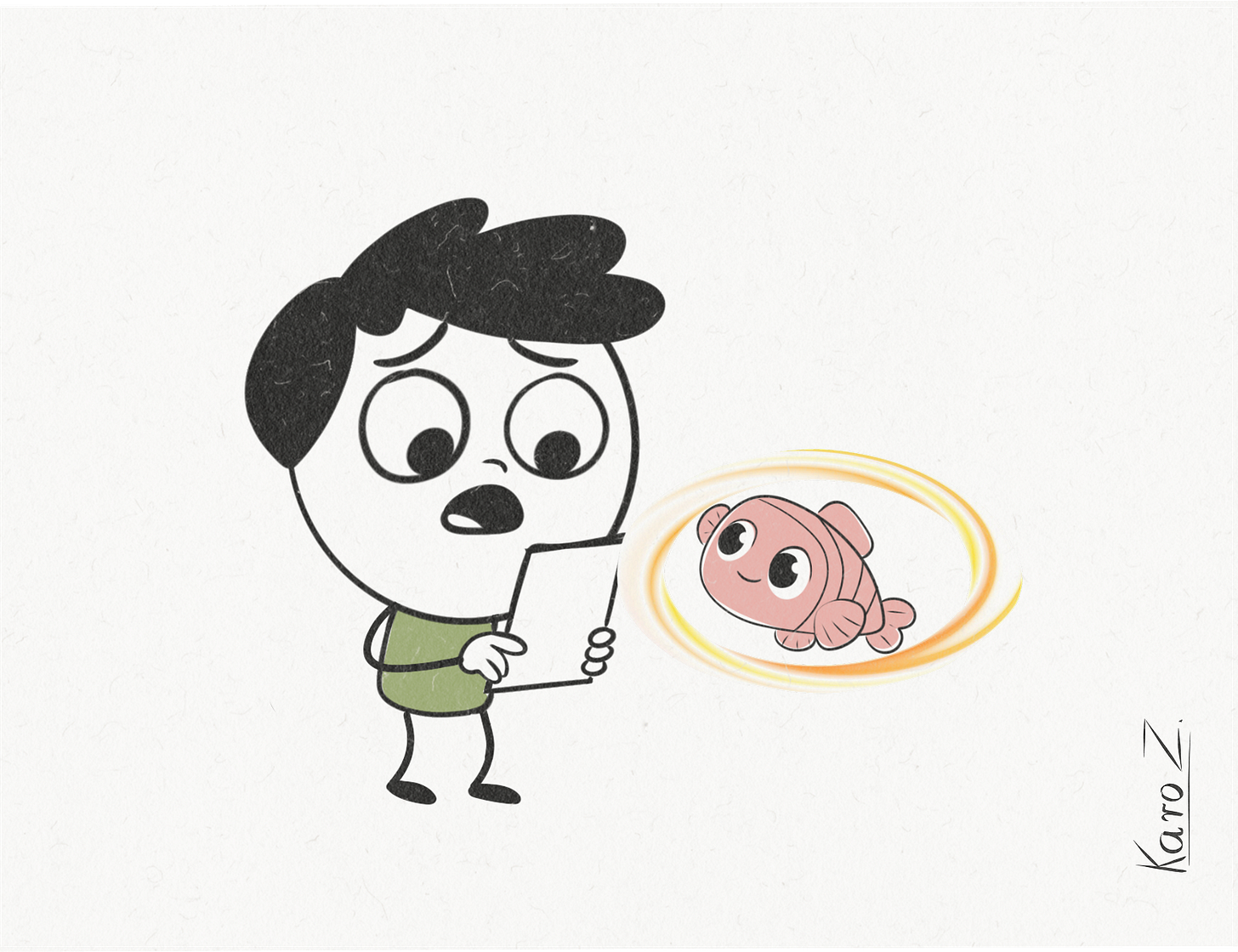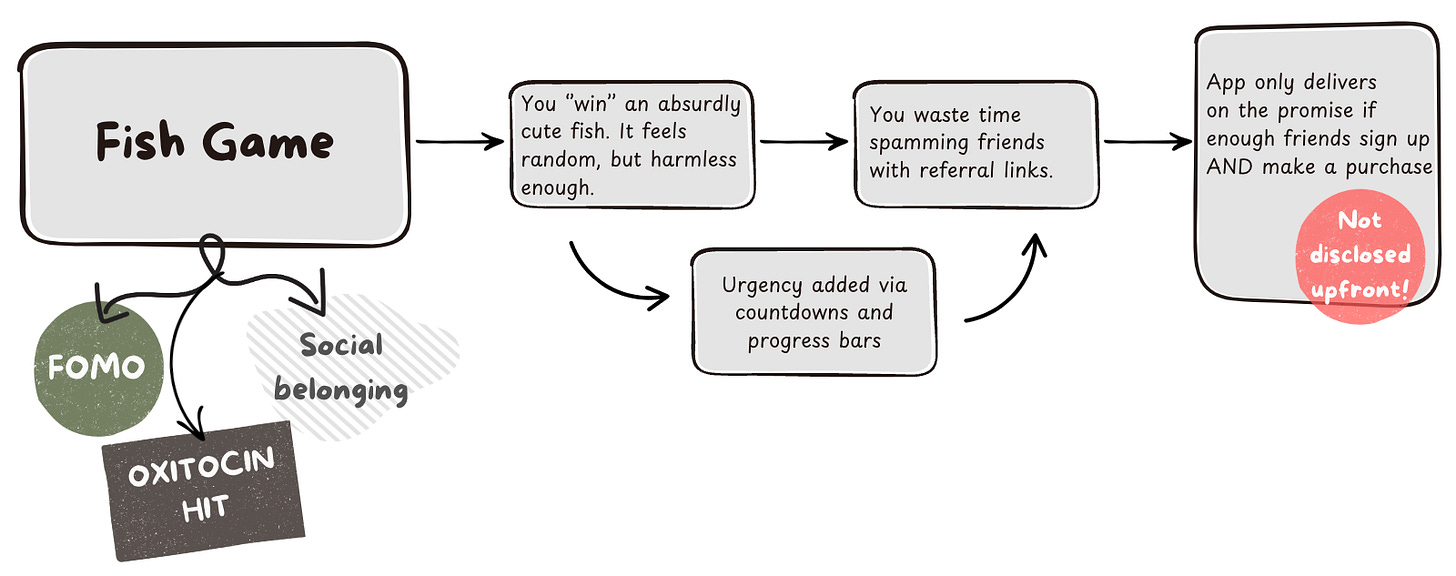When Fun Turns Predatory: Inside Temu’s UX
Dark Patterns in Product, Ethics For Sale and How Temu Uses Dopamine-driven Design to make Shopping Addictive.
Welcome to the Dark UX Carnival
Temu’s UX isn’t just bad. It’s psychological warfare wrapped in confetti.
They’ve embraced every dark pattern in the book, all of them, shoved them into one app, and then said: You know what? Let’s invent more.
You just wanted a pair of black socks. That’s it. Nothing fancy, just humble little socks that quietly do their job.
But then you open the app and BAM, you're hit with gamified interfaces, countdown timers, and emotionally charged nudges.
And the app insists you play a game.
Fine. You spin the wheel, find the socks, and you’re about to check out when suddenly, Temu gives you a…fish. And not just any fish. A wide-eyed, heartbreakingly cuuuuute virtual fish. And now it wants food.

You hesitate. Why is there a fish? But there’s no time to think - the countdown has started, you really need these damn socks, the fish is crying, and the exit-fish button is nowhere to be found. Plus, you suddenly remember your childhood Tamagotchi... so now you can’t let Nemo starve.
You obviously don’t have any digital fish food stuffed in your pockets, but no worries. Temu, ever the enabler, promises to give you some- as soon as you refer a friend.
So you fire off a link to your sister with a text:
💬 Don’t ask. Just click accept. It’s for the fish.
You wait nervously for her reply. Meanwhile, the fish has shrunk and weakened (though somehow it’s still strong enough to send you notifications).
Finally, your sister responds:
💬 Did you open that wine Mom gave you? Anyway, I accepted.
Victory.
You can finally pay for the socks, and no one died in the process.
Until you realize: for the fish to actually get the food, your sister has to buy something first.
Total time spent: 38 minutes
Pairs of socks: 0
Fish fed: 0
Concerned sisters: 1
What you just experienced is a textbook dark UX pattern: gamified manipulation disguised as fun.
Here’s how it works:
Instead of guiding you smoothly to your goal (buying socks), the app sidetracks you into a maze of “fun” interactions. They seem designed for your delight, but they are built for delay. The more time you spend in the app, the more pressure you're under, and the more money you’ll spend.

Keep reading with a 7-day free trial
Subscribe to Product with Attitude to keep reading this post and get 7 days of free access to the full post archives.




